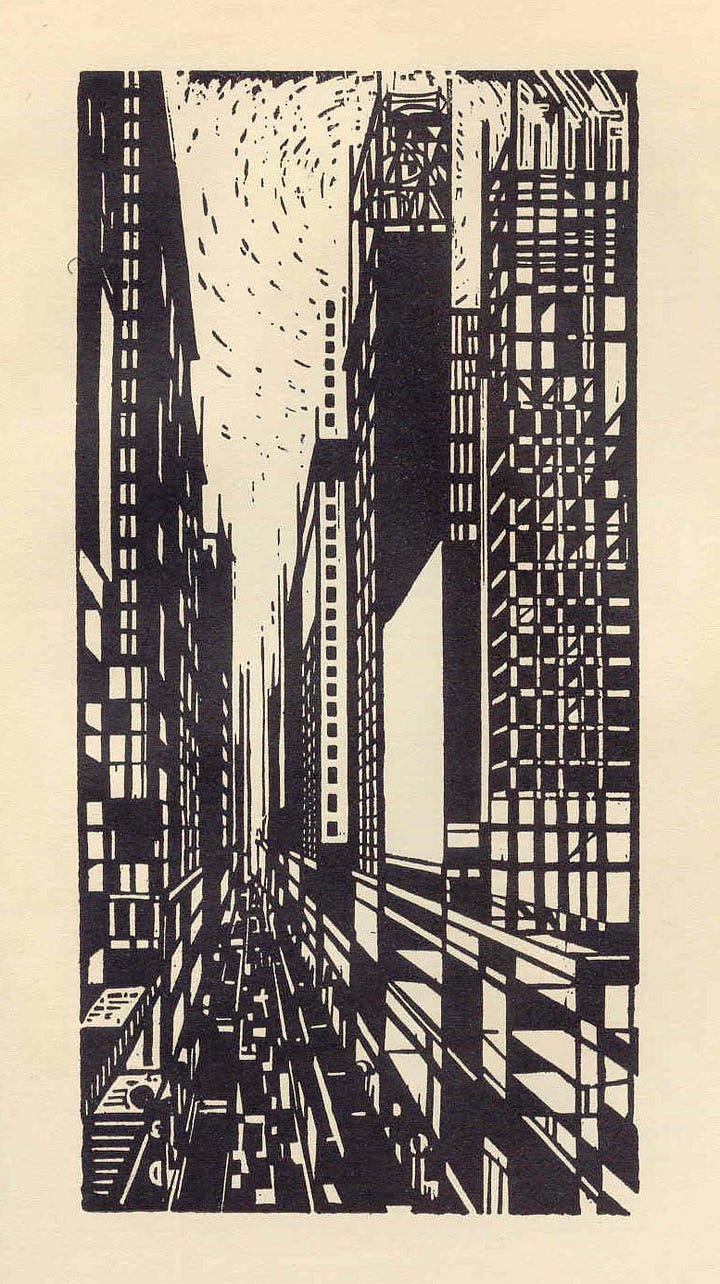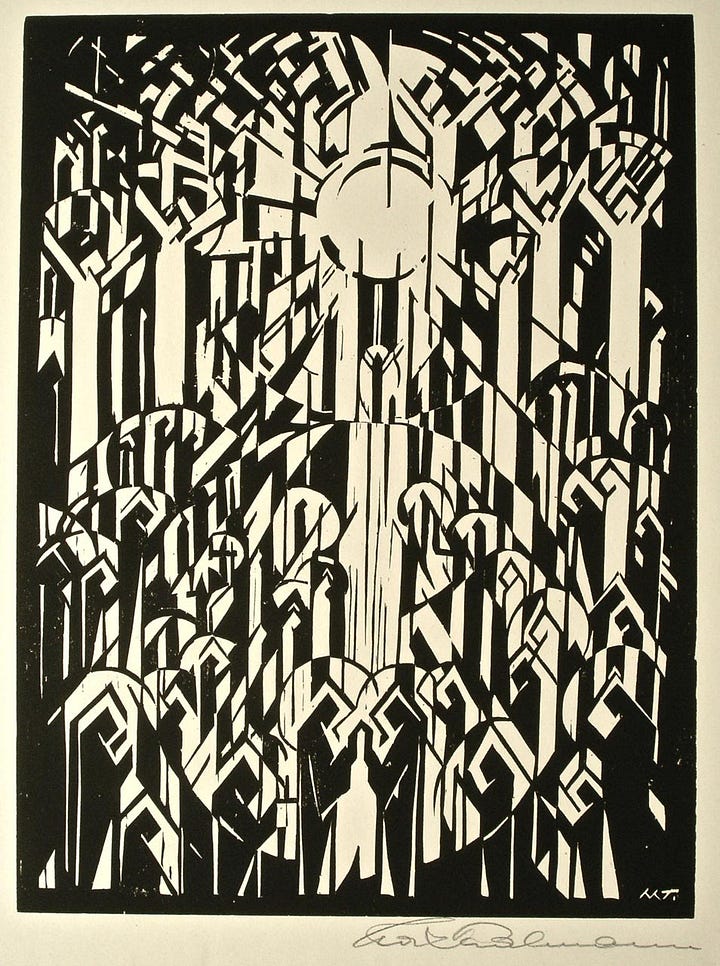On the Cross
Max Thalmann, 1920
And heaven caught that ghost, the Father’s fingers feeling for a son who feebly died so that the rest, in glory now, might live. Then while the earth bled tar and sky dripped ink and fear, the Lord of light, in spirit walked above the rolling storm of grief. His healing hands we pierced, and He unwilling to let go the lot he loved, said thrust your fingers in and feel these wounds are yours, and you are mine.
When an artist prepares a woodcut, they cut away part of a block of wood, leaving the rest of the surface to be covered in ink and then pressed like a stamp into a sheet of paper. The artist could cut away everything except for a circle, which would leave a circular stamp of ink in the finished product, or they could cut out the circle in the block and the circle would be the only part of the paper that isn’t stamped by the ink on the wood. Thelmann’s piece here uses only black ink, and Christ, the hills, the sun and clouds, are all pressed black into the paper. This simple technique allows the artist to suggest to us the bleakness of the day of Christ’s crucifixion. This poem should linger in that imagery, while still suggesting that that’s what Christ wanted. That the darkness was worth it, because we were worth it.
I don’t have a copy of this particular work, but see here a few of Max Thalmann’s other works:




This poem first appeared in Behold the Man, a poetic walk through Brigham Young University Museum of Art’s Of Souls and Sacraments religious art exhibit.

